Skin
Benefits of Aloe Vera for Beauty

Benefits of Aloe Vera for Beauty: For centuries, aloe vera has been regarded as an effective component of skincare and cosmetic regimens. The gel of this succulent plant, which is well-known for its calming, moisturizing, and restorative properties, is rich in vitamins, minerals, enzymes, and other nutrients that promote healthy skin and a radiant complexion. Aloe vera has a variety of benefits for almost all skin types, from reducing inflammation to acting as a natural moisturizer.
Moisturizing Without Greasiness
One of the most well-known uses for aloe vera is as a natural moisturizer. Aloe vera gel absorbs quickly, making it ideal for oily and acne-prone skin types. This is in contrast to many commercial moisturizers, which may leave a residue on the skin. Aloe vera, with its water-like consistency and deep skin penetration, moisturizes without clogging pores or leaving the skin oily. As a result, it can be used by people with sensitive skin who would otherwise react to thicker creams.
Soothing Sunburn and Skin Irritations
Aloe vera is an excellent sunburn treatment due to its cooling and anti-inflammatory properties. When applied to sunburned skin, aloe vera gel promotes faster healing by reducing burning and itching sensations. Aloin and aloe-emodin, two substances found in aloe vera, have natural anti-inflammatory properties that reduce swelling and redness. Aloe vera is therefore frequently found in after-sun lotions because it not only calms but also speeds up the healing process from UV ray damage.
Natural Acne Fighter
Aloe vera is an effective acne treatment due to its antibacterial and anti-inflammatory properties. It contains gibberellins and polysaccharides, which promote cell turnover and regeneration and thus heal acne scars and prevent new breakouts. Aloe vera is an excellent treatment for acne-prone skin because it helps to unclog pores, reduce excess oil, and soothe redness. Frequent use can help to prevent future breakouts by regulating the skin’s oil production.
Anti-Aging Benefits
Aloe vera contains antioxidants such as vitamins C and E, which help fight free radicals that cause premature aging. These antioxidants are essential for keeping skin firm and youthful, preventing wrinkles, and preserving elasticity. Furthermore, aloe vera stimulates the production of collagen and elastin, two essential proteins that give skin its suppleness and structure. Applying aloe vera regularly can make your skin look softer, plumper, and more resistant to aging.
Reduces Dark Circles and Puffiness
The cooling properties of aloe vera gel help to reduce dark circles and puffiness around the eyes. Aloe vera’s anti-inflammatory properties can help reduce swelling, while its high water content hydrates the delicate skin beneath the eyes. In addition to promoting skin health, the gel’s vitamin E helps lighten discoloration under the eyes, giving you a refreshed and rejuvenated appearance.
Improves Skin Tone and Texture
Aloe vera, when used on a regular basis, can help to improve skin texture and tone. It contains numerous enzymes that gently exfoliate the skin, removing dead skin cells and promoting skin renewal. This natural exfoliation can help you achieve a smoother complexion, and even skin tone, and reduce the appearance of age spots and hyperpigmentation. Because aloe vera promotes cell turnover, people with scars or blemishes can see their marks fade over time.
Effective as a Makeup Primer
Aloe vera gel can also be used as a cosmetic primer. It creates a smooth base that hydrates without making the foundation oily, improving its adherence to the skin. Furthermore, its natural tightening action reduces the appearance of pores, resulting in a more flawless finish. Aloe vera is a lightweight and breathable alternative to silicone-based primers, which can sometimes clog pores. This improves makeup application and nourishes the skin.
Natural Remedy for Minor Cuts and Wounds
Aloe vera heals minor cuts, wounds, and insect bites while also improving the appearance of the skin. The skin is protected from infection by its antibacterial and antifungal properties, and the healing process is accelerated by the presence of substances such as gibberellin and glucomannan. Aloe vera gel forms a protective layer over small wounds, keeping the skin hydrated and reducing the risk of scarring.
Reduces Dandruff and Promotes Hair Health
Aloe vera benefits both the skin and the hair. Aloe vera moisturizes and balances the pH of the scalp, reducing dandruff when applied topically. Its natural antifungal properties can help prevent the fungus that causes dandruff. Aloe vera is also an excellent treatment for dry, itchy scalps and dull hair because it contains vitamins and enzymes that strengthen and promote hair growth.
Gentle Skin Exfoliator
Regular exfoliation is necessary for clear, glowing skin, and aloe vera can help with that. Salicylic acid, a natural exfoliant found in aloe vera gel, removes dead skin cells and promotes cell renewal. Even the most sensitive skin types can benefit from this gentle exfoliation method, which makes aloe vera a versatile addition to exfoliating masks and scrubs. It removes dead cells, leaving the skin softer, more radiant, and brighter.

Supports Overall Skin Health with Vitamins and Minerals
Aloe vera contains vital minerals such as calcium, magnesium, and zinc, as well as vitamins A, C, E, and B12, all of which promote healthy skin. These nutrients strengthen the skin’s protective layer, increasing resistance to environmental stressors such as pollution and UV rays. Regular application of aloe vera delivers these beneficial nutrients directly to the skin, promoting hydration, elasticity, and a radiant, healthy complexion.
How to Incorporate Aloe Vera into Your Routine
. Aloe Vera Gel: For the most natural experience, use organic aloe vera products or fresh aloe vera gel directly from the plant. Apply it directly to your face as a calming mask, moisturizer, or acne treatment.
. Aloe Vera Face Masks: Combine aloe vera gel with honey, turmeric, or oatmeal to create personalized face masks that provide additional benefits such as hydration, brightening, and exfoliation.
. Making a hair mask with aloe vera: Blend aloe vera gel with coconut or olive oil and massage it into your scalp. If you want a hydrated, dandruff-free scalp and shiny hair, apply it for about 20 minutes before drinking water.
. Aloe Vera in Creams and Lotions: Look for aloe vera as a primary ingredient in lotions, creams, and serums. Many beauty brands use aloe vera because of its skin-hydrating and nourishing properties.
. After-Sun Care: Use aloe vera gel as a lotion after being in the sun. It works wonders for reducing redness and preventing peeling.
Final Thoughts
Aloe vera is an amazing natural ingredient with numerous applications in skincare and cosmetics. It is a go-to product for anyone looking for a natural way to achieve healthier, more vibrant skin and hair due to its numerous applications and mild yet powerful properties. By incorporating aloe vera into your routine, you are supporting a tried-and-true treatment that provides numerous aesthetic benefits while also nourishing your skin.
Skin
Effortless Techniques for Eliminating Skin Tags at Home
Skin tags, while harmless, can be a source of annoyance due to their appearance or placement. These benign protrusions often prompt individuals to seek economical and straightforward ways to eliminate them without professional intervention. This guide delves into safe and practical methods to remove skin tags from the comfort of your home.
Understanding Skin Tags and Their Origins
Medically termed acrochordons, diminutive, pliable growths that commonly develop in regions where rub against themselves, such as the neck, underarms, or eyelids. Factors like friction, hormonal fluctuations, or hereditary predispositions contribute to their occurrence.

Can You Safely Remove at Home?
Removing skin tags at home can be safe if you use proper methods and precautions. However, it’s important to consult a healthcare professional to confirm that the growth is indeed a skin tag.
Essential Precautions Before Removing Skin Tags
- Cleanse the area thoroughly to prevent infections.
- Use sterilized tools if needed.
- Avoid tags near sensitive areas like the eyes.
- Do not attempt to remove large or inflamed tags at home.
Harnessing Tea Tree Oil for Skin Tag Removal
Tea tree oil’s antifungal and antiviral properties make it an excellent home remedy.
Steps:
- Clean the affected area.
- Apply tea tree oil using a cotton swab.
- Cover with a bandage overnight.
- Repeat daily until the tag naturally falls off.
Using Apple Cider Vinegar for Tag Elimination
Apple cider vinegar helps desiccate skin tags, making them fall off naturally.
Steps:
- Soak a cotton ball in apple cider vinegar.
- Secure it to the tag with a bandage.
- Please keep it in place for a few hours daily.
Garlic: Nature’s Solution to Skin Tags
Garlic’s enzymes break down skin tag tissues.
Steps:
- Crush fresh garlic into a paste.
- Apply to the tag and cover with a bandage.
- Leave it overnight and rinse in the morning.
Over-the-Counter Remedies for Skin Tag Removal
Pharmacies stock products like creams containing salicylic acid for skin tag removal. Follow instructions precisely to avoid irritation.
Efficacy of Home Freezing Kits
DIY cryotherapy kits are designed to freeze and detach skin tags. Carefully follow guidelines to avoid damage to surrounding skin.
Dental Floss Method: A Frugal Alternative
Tie sterilized dental floss around the tag’s base to cut off blood flow, leading to the tag’s detachment.
The Unlikely Aid of Banana Peels
Banana peels contain enzymes that may help dissolve skin tags.
Steps:
- Cut a piece of peel and place it inside-out on the tag.
- Secure it with a bandage overnight.
- Repeat daily until results appear.
When to Seek Medical Advice
See a doctor if a skin tag is substantial, painful, or changes appearance. Avoid removing tags near sensitive areas or signs of infection.

Post-Removal Care and Healing Tips
- Keep the treated area clean and dry.
- Apply antiseptic cream to prevent infections.
- Avoid picking at the site to encourage healing.
Conclusion
Removing skin tags at home is an economical and viable option using safe and effective methods. These techniques, from natural remedies like tea tree oil to store-bought solutions, help restore your skin’s smoothness. Prioritize safety and consult a professional when in doubt.
FAQs
- Do skin tags reappear after removal?
- Yes, new ones may form in friction-prone areas.
- Is the process painful?
- If done carefully, it causes minimal discomfort.
- Are skin tags contagious?
- No, they are not.
Skin
Eliminate Skin Tags with These Simple Home Remedies
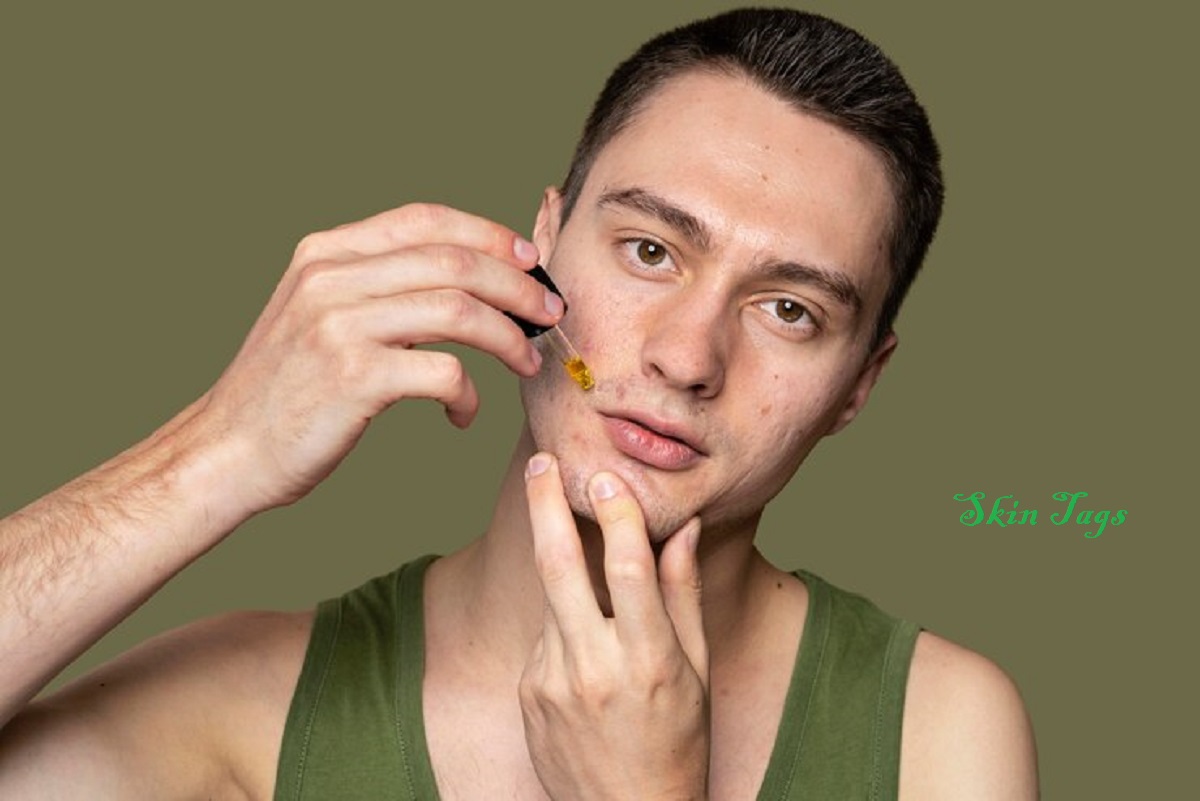
Skin tags, those small, harmless growths that can appear on your body, may seem like nothing more than cosmetic issues. If you’ve noticed one of these pesky bumps on your neck, under your arms, or even on your eyelids, rest assured you’re not alone. But don’t worry! Although these imperfections might not be visually appealing, they aren’t harmful to your health, and there are plenty of natural methods to remove them without visiting a doctor. This guide will introduce you to some effective ways to get rid of skin tags naturally.
What Are Skin Tags and How Do They Occur?
Medically referred to as acrochordons, skin tags are small, soft, non-cancerous growths that hang off the skin. They usually develop in areas where skin rubs against skin, such as the neck, armpits, eyelids, groin, or under the breasts. These growths vary in size and generally feel like soft, fleshy lumps.
Skin tags often arise from friction, aging, obesity, or genetic factors. Individuals over 40, as well as those who are overweight or have certain medical conditions like diabetes, are at a higher risk of developing them.

Are Skin Tags Harmful or Just a Nuisance?
Typically, skin tags are not dangerous and are non-cancerous. They don’t represent any significant health risks. However, they can be annoying, especially if they rub against clothing or jewelry. For some, they can cause discomfort or embarrassment, prompting a desire for removal. It’s important to remember that medical attention is only necessary if a skin tag becomes painful, bleeds, or shows signs of infection.
Why Choose Home Remedies for Skin Tags?
Home remedies offer a safe, cost-effective, and easy way to deal with skin tags without needing to see a dermatologist. Many over-the-counter solutions or professional procedures can be pricey, while natural remedies allow you to manage the situation from your own home. Still, it’s vital to use these remedies cautiously and ensure the method you select suits your skin type.
Precautions to Take Before Trying Home Remedies
Before trying any home remedy, it’s wise to take some precautions. Always perform a patch test to check for allergic reactions, especially when using ingredients like tea tree oil, garlic, or apple cider vinegar. If the skin around the tag becomes irritated, stop the treatment right away. If you have any doubts about a method, consulting a healthcare provider is a smart decision.
Utilizing Tea Tree Oil for Skin Tag Treatment
Tea tree oil is well-known for its antiseptic and anti-inflammatory properties. It’s a popular natural treatment for skin tags as it can help dry them out over time. Here’s how to use it:
- Clean the area around the skin tag using warm water and soap.
- Use a cotton ball to dab a small amount of tea tree oil directly onto the skin tag.
- Let it sit for 10-15 minutes, then rinse with warm water.
- Repeat this procedure twice daily for several weeks.
Apple Cider Vinegar: A Tried-and-Tested DIY Option
Apple cider vinegar (ACV) is another favored home remedy for skin tags. Its acidic nature helps break down the tissue of the tag. Here’s how to use it:
- Soak a cotton ball in apple cider vinegar.
- Place it over the skin tag and secure it with a bandage.
- Keep it on for 10-15 minutes, then rinse the area with water.
- Repeat this twice daily for 1-2 weeks.
Using Garlic to Naturally Remove Skin Tags
Garlic has natural antimicrobial properties and can help in eradicating skin tags. To use garlic:
- Mash a small garlic clove and apply it directly to the skin tag.
- Cover it with a bandage and leave it overnight.
- In the morning, remove the bandage and clean the area thoroughly.
- Repeat this process every night until the skin tag falls off.
Aloe Vera for Skin Care:
Aloe vera is well-regarded for its soothing and healing properties. It can help lessen irritation and inflammation around skin tags. Here’s how to apply it:

- Extract fresh gel from an aloe vera leaf.
- Apply the gel to the skin tag and let it sit for 30 minutes.
- Rinse the area with warm water.
- Repeat twice a day for a few weeks.
Castor Oil and Baking Soda Paste: A Potent Combination
The blend of castor oil and baking soda creates a strong paste that can aid in drying out skin tags. To use this paste:
- Combine equal parts of castor oil and baking soda to form a thick mixture.
- Apply the paste to the skin tag and cover it with a bandage.
- Leave it on overnight and wash it off in the morning.
- Repeat this nightly for 1-2 weeks.
Over-the-counter options for Skin Tag Removal
Several over-the-counter products are available for removing skin tags, including creams, freezing kits, and other topical solutions. While these options are convenient, it’s important to adhere to the instructions carefully and consult a dermatologist if you have any questions.
Safe Home Freezing of Skin Tags
Freezing skin tags can be done at home using a freezing kit purchased at pharmacies. This method works by freezing the skin tag tissue, causing it to fall off. However, precise adherence to the directions is crucial to prevent damage to the surrounding skin.
The Dental Floss Technique: Simple and Effective
The dental floss method involves securely wrapping dental floss around the base of the skin tag to cut off its blood supply. After a few days, the skin tag will dry up and eventually detach. Be careful not to tie the floss too tightly to avoid skin damage.

Banana Peels: An Unusual Yet Effective Approach
Banana peels contain enzymes that may help in the removal of skin tags. To utilize a banana peel:
- Cut a small piece of peel and place it over the skin tag.
- Secure it with a bandage and leave it on overnight.
- Repeat this nightly until the skin tag falls off.
Aftercare Following Skin Tag Removal
After a skin tag is removed, caring for the area is crucial to prevent infection. Apply a gentle moisturizer and keep the skin clean. Avoid scratching or irritating until it has fully healed.
When to Consult a Professional About Skin Tags
If your skin tag becomes painful, changes color, or shows symptoms of infection (like redness, swelling, or pus), seek medical advice. Additionally, if you’re unsure whether a growth is a skin tag or something else, it’s best to consult a healthcare professional.
Common Myths About Skin Tag Removal
There are numerous misconceptions surrounding skin tag removal. For example, some believe that removing one skin tag will lead to more appearance. This is false; removing a skin tag does not cause others to form. Always rely on credible information and proven methods when addressing skin tags.
The Benefits of Home Skin Tag Removal
Removing skin tags at home is convenient, cost-effective, and efficient. It provides greater control over the process and helps avoid expensive medical procedures.
Preventing Skin Tags: Long-Term Care Tips
To reduce the chances of developing future maintain a healthy weight, minimize skin friction, and keep your skin moisturized. If you observe any new growths, take action promptly to prevent them from enlarging or multiplying.
Frequently Asked Questions
Are skin tags contagious?
No, skin tags are not contagious and are caused by friction, aging, or genetics.
Can I remove a skin tag at home?
Yes, several home remedies such as tea tree oil or apple cider vinegar can aid in the removal of skin tags.
Do skin tags always come back?
Skin tags may not return after removal, but new ones can form in other areas due to similar reasons.
Can a skin tag be cancerous?
Skin tags are benign and do not become cancerous. Nonetheless, if you notice any unusual changes, it’s advisable to consult a doctor.
How long does it take for home remedies to remove a skin tag?
Home remedies can take anywhere from a few days to a couple of weeks to yield results. Consistency is crucial.
Skin
Natural Face Moisturizers for Rosacea: Reviews & Buyers Guide
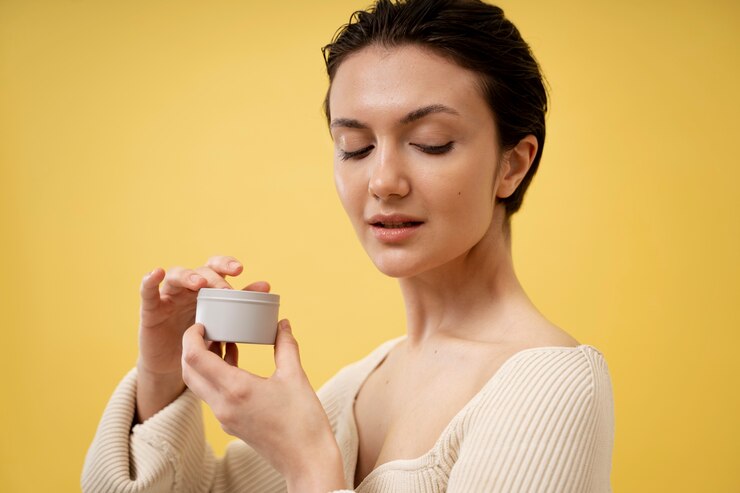
Advantages of Using a Natural Face Moisturizer
1. These creams can help to reduce wrinkles:
2. Moisturizers are ideal for your skin:
3. The oils protect your skin:
4. The creams shrink enlarged pores:
5. The moisturizers down rashes:
What to Consider When Looking for Moisturizers for Rosacea
Moisturizing your skin is a great way to protect your skin when treating rosacea. Some natural face moisturizers offer protection against environmental factors that exacerbate rosacea symptoms.
Before you settle on a moisturizer, read this review carefully, and always talk to your dermatologist.
- Avoid moisturizers that have too many fragrances. You should also avoid harsh cleansers, or any products that contain alcohol as they may contribute to rosacea outbreaks.
- Watch out for rosacea irritants found in different skin care products. They include alcohol, fragrance, Hazel, eucalyptus oil, peppermint and menthol. Other things you want to avoid include exfoliating agents, astringents and anything else that’s harsh for sensitive skin.
- Test any product on a peripheral area before you apply it on your skin. That will help you avoid any product that you react to and take note of the ingredients. Rosacea irritants vary from one person to another, and your own skin’s reaction should be your guide.
Mistakes to Avoid When Applying Moisturizers
Over saturating your skin
Rubbing the skin too hard
Not allowing the cream to sink in
Forgetting the area under the eyes
Forgetting the neck area
What you Should Know Before Using Moisturizer for Rosacea
1. Premature wrinkles:
2. Your complexion may be dull and flaky:
3. Your layer of protection may become lost:
4. Your skin may become itchy:
Read the Label
Sensitive skin
Best organic face lotion for dry skin: Skin care products are characterized to suit different skin types. Common skin types include oily, dry, combination, and sensitive. Rosacea makes your skin dry; that doesn’t necessarily mean you should use moisturizers for people with dry skin. They contain too much oil, emollients and humectants that can be hard on your skin. The irritant potential outweighs the potential hydrating properties you get. Choose a mild moisturizer formulated for sensitive skin since they moisturize your skin and are gentle.
Bland moisturizers
These moisturizers are free from harsh ingredients that irritate the skin. You want to avoid anything that can trigger a flare-up. Avoid using moisturizers that have redundant components. The best products alleviate your skin’s dryness. Avoid moisturizers with alcohol, fragrances and related additives.
Avoid acne treatment products
Regardless of whether your rosacea is accompanied with pimples, it is not advisable to use moisturizers formulated for treating acne. They have ingredients such as benzoyl peroxide and salicylic acid that can dry your skin. Consult a dermatologist for the best way to treat acne while dealing with rosacea.
Calming ingredients
Try using moisturizers that have a calming effect on your skin to reduce the symptoms of rosacea. Chamomile, aloe and green tea are natural products that have a soothing effect. That will help to lessen the redness and inflammation you could be experiencing.
Sunscreen
Exposure to the sun is a known trigger for rosacea flare ups. Choose a moisturizer with an SPF 15 protection or higher or stay covered!
5 of the Best Moisturizers for Relieving Rosacea Reviewed
1. Miravage Facial Redness and Rosacea Relief Cream & Anti-Aging Moisturizer Serum
PROS
- You can wear it under your makeup
- Offers anti-aging benefits
- There is no greasy feeling
- Quickly absorbed into your skin
CONS
- Has a light scent that lingers
2. Era Organics Face Cream
PROS
- 60-day money back guarantee
- Non-greasy formula
- Has anti-aging properties
CONS
- Can be a bit expensive
3. Aveeno Eczema Therapy Moisturizing Cream
PROS
- Recommended by dermatologists
- Fast acting formula that hydrates and soothes
- Steroid and fragrance free
- Reasonably priced
- Great packaging for easy use
CONS
- Relatively thick formula feels heavy during application
4. HoneySkin Organics Aloe Vera Ultimate Face and Body Cream
PROS
- Organic product
- Doesn’t have fillers like mineral oils, parabens or water
- Light non-greasy formula
- No fragrance
CONS
- A little bit costly
- Few people allergic to some ingredients
5. La Roche-Posay Soothing Moisturizer
PROS
- Fragrance free
- Reduces chances of skin dryness
- Easy to apply light texture
CONS
- It is relatively expensive
Conclusion
Dermatologists still have a long way to go with regards to rosacea. Scientists are still learning what its real causes are and the best way to treat it. While there may be some genetic factors, the environment has a big contribution as well. There are different underlying factors causing rosacea. People battling it should make choices that eliminate the risk of outbreaks. Take note that your diet can trigger rosacea flare ups. You want to avoid spicy foods, hot foods and drinks, and alcoholic beverages. But a moisturizer designed for those suffering from rosacea can definitely help for some. As per the review, the Honeyskin Face & Body Cream stands out to me as the best moisturizer for rosacea here. Just remember that everyone’s skin reacts differently. Trial & error and speaking to your dermatologist are a couple ways you can figure out which cream will work for your skin.
-
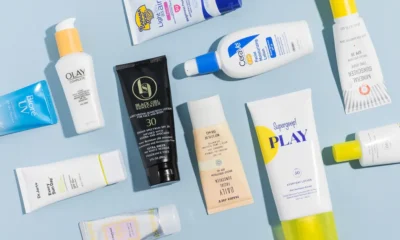
 Skin2 days ago
Skin2 days agoNatural Oil-Free Face Moisturizer Reviews & Buyers Guide
-

 Skin9 months ago
Skin9 months agoAbout Face Beauty: Tips for Enhancing Your Natural Beauty
-
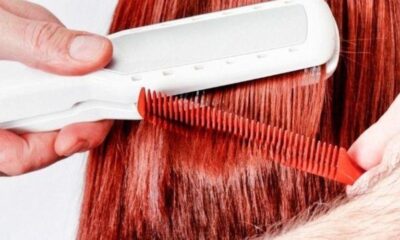
 Hair10 months ago
Hair10 months agoDoes a Flat Iron Kill Lice? Fact or Myth?
-
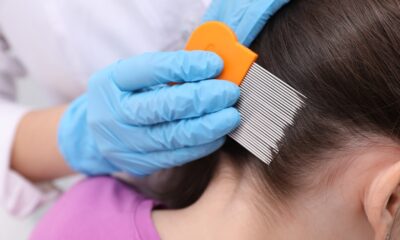
 Hair2 months ago
Hair2 months agoDoes a Flat Iron Kill Lice? Fact or Myth?
-

 Skin1 week ago
Skin1 week agoNeutrogena Naturals Multi-Vitamin Nourishing Face Moisturizer Review
-
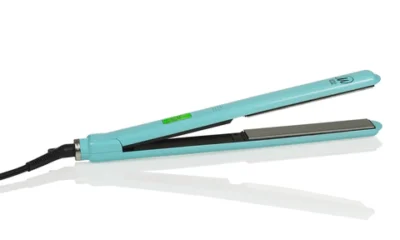
 Hair1 week ago
Hair1 week agoTitanium Flat Iron vs Ceramic
-

 Hair10 months ago
Hair10 months agoFunction of Beauty: Personalized Hair Care for Your Unique Needs
-
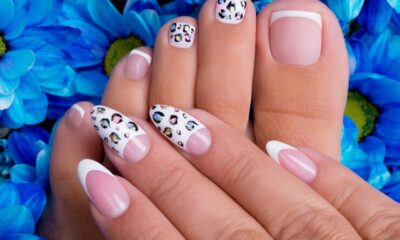
 Skin9 months ago
Skin9 months agoBeautiful Nails: Tips and Tricks for Healthy and Gorgeous Nails



